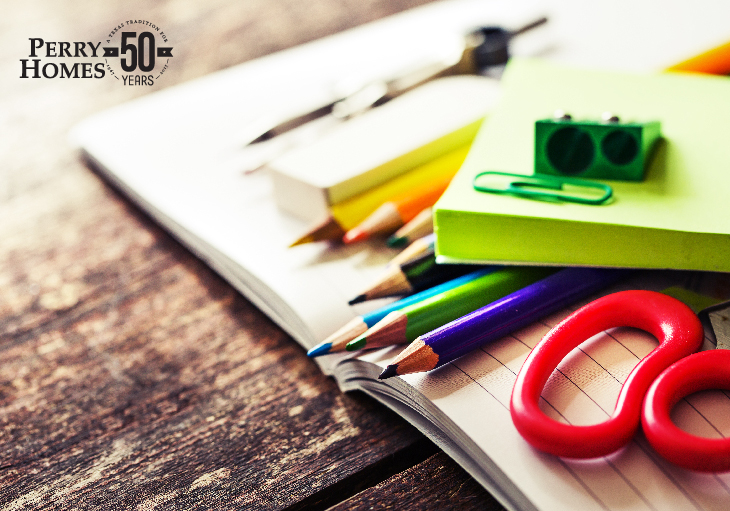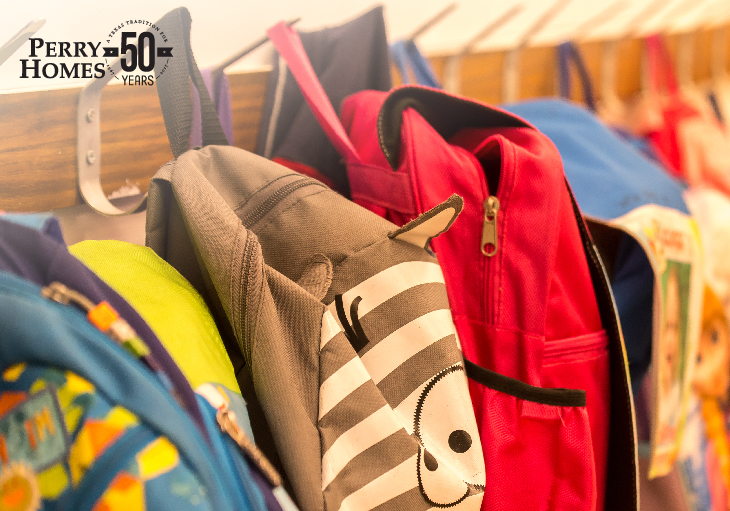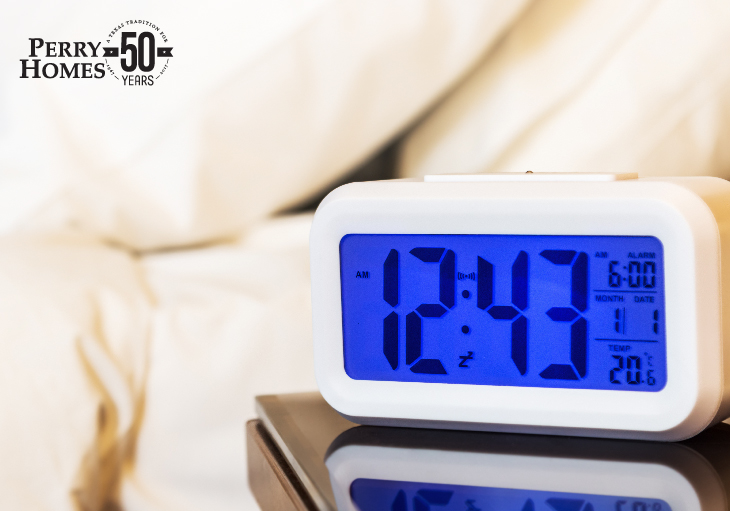
10 Tips to Get Your Home Ready For Back to School
With these tricks, there is no reason to fear a new school year
The kids heading back to school is exactly like those Staples commercials from a few years ago. In the spot, excited parents glide down aisles to "The Most Wonderful Time of the Year," dancing with binders and staplers, while their kids mope behind them. While humorous, there is more to heading back to school than buying school supplies. For parents, this means transitioning from the lax and carefree atmosphere of summer to a more structured schedule, both at school and at home.
To make things easier on the home front for you and your kids, here are some primers for starting the year off right.
Streamline school supplies

First off, you are probably wondering what this back-to-school necessity has to do with readying your home. True, shopping can take you away from your home, but shopping in a more efficient manner leaves more time for getting through that To-Do list.
Start by keeping shopping time to a minimum as much as possible and avoid going to more than one location to maximize your time and keep stress levels low. This time of year, office supply stores can sell their stock quickly, particularly in areas with large school districts and universities. If possible, try ordering most of the requisite supplies online. Ordering online will help divert your energy to other important tasks while still achieving your objective.
The advantage to shopping earlier is, well, getting everything you need before it runs out. But it also gives you a better shot at getting those premium items, like electronics and those top-of-the-line binders. If you are shopping on Amazon, keep track of prices with apps like Camel Camel Camel.
Make space for new clothes

If you have not already cleaned out those closets from Spring Cleaning, there is no better time than school time. Make room for those incoming fashions by being merciless with old clothes. Stick to two piles: one for keep and another for toss or donate. Leaving room for "maybe" just eats up more time.
When it comes to buying new clothes, though, here is an insider secret: wait until after school to buy clothes.
This one sounds counterintuitive. After all, Back-to-School shopping is all about getting new stuff beforehand. But many retailers will slash prices come September. The delay would also let the kids scout what styles are popular at school. You can even turn shopping into an exercise in budgeting. For pre-teens and teens, give them a budget and have them do their own shopping. Besides avoiding potential style mishaps, this allows them to take ownership of style and finances in a controlled setting.
One word of caution, though. Be mindful of any clothing standards or rules at your child’s school to help identify problematic choices.
Pair a supply cache with a proper backpack

Rather than have those piles of pencils, pens and paper strewn throughout your home, settle on one centralized location. Depending on the amount–you may have leftovers from previous years–you can choose from a drawer, a cubby or even an entire plastic storage bin. Your choice will more than likely depend on you or child’s desired level of organization.
And when it comes to purchasing a backpack, make sure it can hold all their items without overstuffing. That means plenty that of room for laptops, textbooks and fidget spinners without adding excessive shoulder strain. Forbes has some suggestions when it comes to brands and styles.
Set a sleep schedule

Who wants to be late on the first or any day? Nobody. Yet setting a healthy sleep schedule is one of the hardest parts for most adults and their kids. Try setting multiple alarms to ensure everyone—including yourself—is up and running, because there is nothing worse than having to drag you or your child out of bed in the morning.
To help set the routine the night before, enforce strict bedtimes in stages. For example, start winding down by 8 p.m. (e.g., brushing teeth, putting on pajamas); in bed by 9; sleeping by 10-10:30).
Make it a rule that electronics are not allowed after a certain time, as the blue light they emit stimulates the brain rather than let it sleep.
Plan meals
This option can be fun, despite how it sounds. As a family, plan what lunches and dinners you will have each day. For parents, this lets you shop ahead of time without making any last-minute trips. Children will like this , too, because they can vote for their favorite foods and provide other input. This way everyone is happy. For variety, include a Wild Card day and us that spontaneity for leftovers or going out.
Try using a dry erase board to keep track and provide a space for listing needed groceries.
Dedicate storage space
You know the urge to literally let go of everything when you get home? Well, so do the kids. Rather than let them fling their belongings all over the foyer and living room, bring order to chaos by creating a spot all for their own. This space can be a shelf of hangers, a collection of plastic cubbies, like the kind you would find at IKEA, or an entire closet. Either way, there should be enough room to hold all those school supplies, shoes, book bags and whatever else they lug to class.
Create snack drawers
Despite a healthy and nutritious lunch at school, there is still a chance that your young minds come home hungry. Rather than have them come to you looking for food, point them in the direction of a dedicated drawer full of their favorite healthy foods. Offerings could include dried fruit, granola bars, nuts, water and other favorites.
Make an inbox-outbox for your home
Unless your family conducts all internal communication via e-mail, it is unlikely that everything gets shared in an effective straightforward manner, so bring a little bit of office operation home by establishing an in-out system.
Get two letter trays and label them—you guessed it—In and Out. Have your child put anything requiring a signature, such as permission slips or order forms, or other important information in the Inbox. When you are done with each item and they need to return to school, put them in the Outbox. Overall, this is great way to avoid confusion or excuses.
If you are feeling extra motivated, try combining dedicated storage space, meal planning and your inbox-outbox into one centralized hub!
Designate work and play areas
Sometimes children respond well to compartmentalized activities, such as a work place and a play place. Often, children have desks in their own rooms, which is fine, unless they are working on homework and get distracted by one of the many other things around them.
Instead, pick an area like a dining table where they have enough space to spread out and there are a limited amount of distractions. The same goes for play areas, but the rules do not have to be quite as strict in those cases.
Discuss or review safety protocols
No matter the age, it never hurts to bring up general safety best practices. For younger children, this includes walking to school or the bus stop, reminding them to always use crosswalks and abide crossing guards and stay on sidewalks. For new drivers, remind them of the rules of the road and to always obey traffic signals and signs.
Feeling some weight lifted? Then share this post and see what others have to say.
